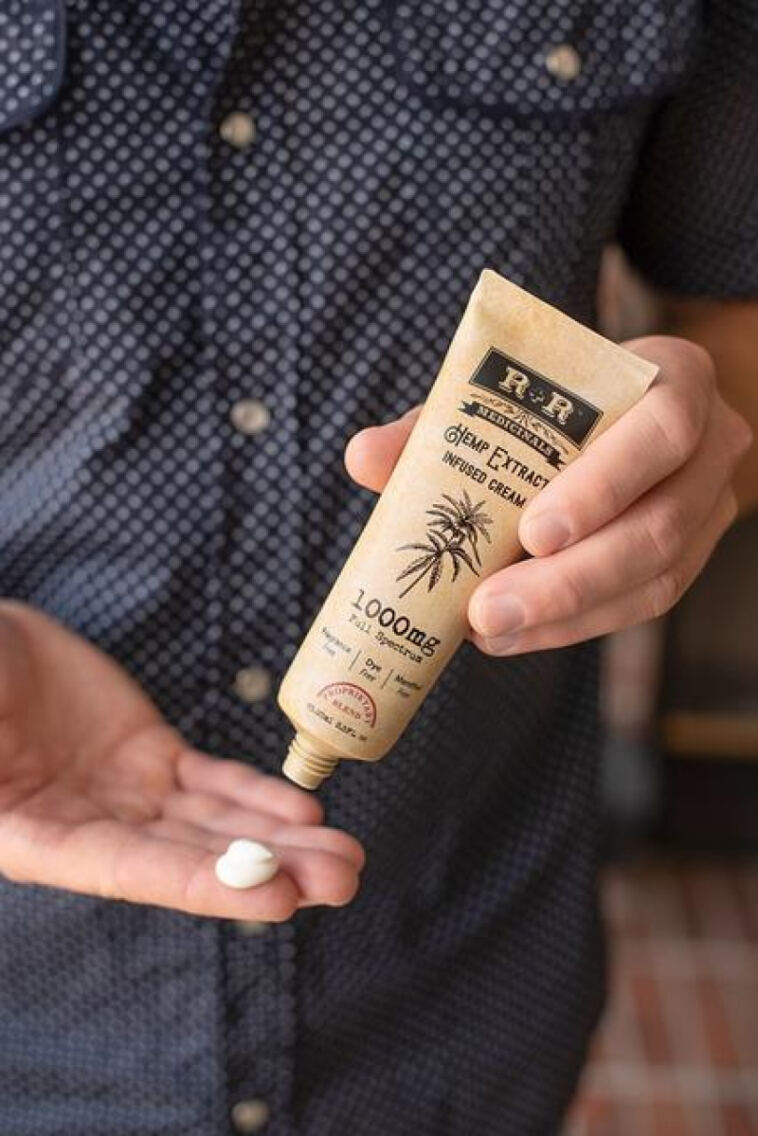- Like
- SHARE
- Digg
- Del
- Tumblr
- VKontakte
- Flattr
- Buffer
- Love This
- Save
- Odnoklassniki
- Meneame
- Blogger
- Amazon
- Yahoo Mail
- Gmail
- AOL
- Newsvine
- HackerNews
- Evernote
- MySpace
- Mail.ru
- Viadeo
- Line
- Comments
- Yummly
- SMS
- Viber
- Telegram
- JOIN
- Skype
- Facebook Messenger
- Kakao
- LiveJournal
- Yammer
- Edgar
- Fintel
- Mix
- Instapaper
- Copy Link
Cannabis has been used for centuries for various medicinal and therapeutic purposes, but unlocking its full potential requires a bit of science and technique. In this guide, we will delve into the art of activating cannabinoids through a process known as decarboxylation, shedding light on the intricacies of this crucial step in cannabis consumption. Join us as we explore the fascinating world of decarbing cannabis and uncover the keys to unleashing its powerful effects.
Understanding the Science behind Decarboxylation
Decarboxylation is a crucial process in the world of cannabis. It is the act of applying heat to cannabis flower to activate the cannabinoids contained within. This process involves removing a carboxyl group from the chemical structure of cannabinoids, such as THC and CBD, making them bioavailable and ready to create the desired effects.
When decarbing cannabis, the temperature and timing are key factors to consider. Decarboxylation occurs most effectively when cannabis is heated at temperatures ranging from 220 to 245 degrees Fahrenheit for about 30 to 60 minutes. This ensures that the cannabinoids are activated without losing potency or burning off essential compounds.
By mastering the art of decarboxylation, individuals can unlock the full potential of their cannabis flowers and create potent edibles, oils, and tinctures. This simple process can enhance the overall experience of consuming cannabis, providing users with a more potent and effective product.
Maximizing the Efficacy of Cannabis through Proper Heating Techniques
When it comes to maximizing the efficacy of cannabis, proper heating techniques play a crucial role in activating cannabinoids. One of the key methods for achieving this is through decarboxylation, also known as decarbing. This process involves heating cannabis at a specific temperature to convert raw cannabinoids into their active form, making them more bioavailable and potent.
Decarbing cannabis is truly an art form that requires precision and care. By following the right temperature and timing, you can unlock the full potential of cannabinoids such as THC and CBD. This crucial step ensures that you reap the maximum benefits of cannabis, whether you’re using it for medicinal or recreational purposes.
For those new to decarbing cannabis, it’s essential to understand the science behind this process. By activating cannabinoids through proper heating techniques, you can experience a more pronounced and effective high or therapeutic effect. Whether you’re baking edibles or preparing cannabis-infused oils, mastering the art of decarbing is key to enjoying the full spectrum of cannabis benefits.
Factors Affecting the Decarboxylation Process
include the following:
- Temperature: The temperature at which decarboxylation occurs is crucial. Too low of a temperature won’t activate the cannabinoids, while too high of a temperature can burn off the valuable compounds. Finding the right balance is key.
- Time: The length of time that cannabis is exposed to heat also plays a role in the decarboxylation process. It is important to allow enough time for the cannabinoids to fully activate without overdoing it.
- Moisture content: The moisture content of the cannabis can affect how well the decarboxylation process works. If the cannabis is too wet, it may not decarb efficiently, while if it is too dry, it may burn too quickly.
In order to effectively decarb cannabis, it is important to consider these factors and adjust accordingly. By controlling the temperature, time, and moisture content, you can ensure that you are getting the most out of your cannabis.
For those looking to optimize their decarboxylation process, consider using a decarboxylation machine. These devices are specifically designed to activate cannabinoids at the perfect temperature for the optimal amount of time, taking the guesswork out of the process. With a decarboxylation machine, you can ensure that your cannabis is properly activated every time.
| Temperature | Time | Moisture Content |
|---|---|---|
| 240°F | 45 minutes | 5-10% |
Tips and Tricks for Achieving Optimal Activation of Cannabinoids
When it comes to maximizing the effects of cannabinoids in cannabis, proper activation is key. One of the most effective methods for unlocking the full potential of cannabinoids is through decarboxylation, also known as decarbing. This process involves heating cannabis at a specific temperature to convert THCA into THC, the psychoactive compound that produces the desired effects.
For optimal activation of cannabinoids, follow these tips and tricks:
- Temperature Control: Set your oven or decarboxylation device to the recommended temperature for decarbing cannabis, usually around 220-245°F.
- Grind the Cannabis: To ensure even heating and maximum surface area exposure, grind your cannabis before decarbing.
- Use a Thermometer: Invest in a reliable thermometer to monitor the temperature throughout the decarbing process and make sure it stays within the optimal range.
| Cannabinoid | Optimal Activation Temperature (°F) |
|---|---|
| THCA | 220 |
| CBD | 248 |
Exploring Different Methods of Decarbing Cannabis
One of the most crucial steps in preparing cannabis for consumption is decarboxylation, also known as decarbing. This process involves applying heat to the plant material to activate the cannabinoids, making them bioavailable for our bodies to absorb. While decarbing may seem straightforward, there are actually various methods to achieve the desired results.
One popular method of decarboxylating cannabis is using an oven. By evenly spreading out the cannabis on a baking sheet and baking it at a low temperature for a set amount of time, you can effectively activate the cannabinoids. This method is convenient and accessible for most people, requiring only an oven and some patience.
For those looking to preserve the aromatic terpenes and delicate flavors of the cannabis, using a sous vide machine may be the preferred method. By vacuum-sealing the cannabis in a bag and immersing it in a precisely controlled water bath, you can gently decarb the plant material without losing any valuable compounds. This method offers a more precise and controlled decarbing process, resulting in a flavorful end product.
Q&A
Q: What exactly is decarboxylation and why is it important when working with cannabis?
A: Decarboxylation is the process of heating cannabis to convert the non-psychoactive THC-A (tetrahydrocannabinolic acid) into the psychoactive THC (tetrahydrocannabinol). This step is crucial in order to activate the cannabinoids and unlock their full potential.
Q: How does decarboxylation affect the potency and effects of cannabis?
A: Decarboxylation significantly increases the potency of cannabis and enhances its psychoactive effects. By activating the cannabinoids, users can experience a more potent high and therapeutic benefits.
Q: What are the optimal temperatures and times for decarboxylating cannabis?
A: The ideal temperature for decarboxylating cannabis is around 240°F (115°C) for 30-45 minutes. This ensures that the cannabinoids are fully activated without burning off any beneficial compounds.
Q: What are some popular methods for decarbing cannabis at home?
A: Some popular methods for decarboxylating cannabis at home include using an oven, a slow cooker, or a sous vide machine. Each method has its own pros and cons, so it’s important to choose the one that works best for you.
Q: How can properly decarbed cannabis be used in different recipes and applications?
A: Once cannabis has been decarboxylated, it can be infused into oils, butters, tinctures, and other products to create edibles, topicals, and more. The possibilities are endless when it comes to utilizing decarbed cannabis in various recipes and applications.
In Conclusion
In conclusion, understanding the process of decarboxylation is crucial for unlocking the full potential of cannabinoids in cannabis. By activating these compounds through heat, you can enhance the effects and benefits of your cannabis products. Whether you’re a seasoned cannabis enthusiast or a novice looking to experiment with edibles, mastering the art of decarbing cannabis opens up a world of possibilities. So next time you’re preparing a batch of infused oils, tinctures, or edibles, remember the power of decarboxylation and elevate your cannabis experience to new heights. Happy activating!


